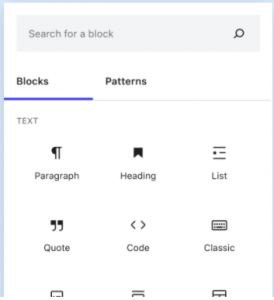The revolutionary SaaS (Software-as-a-Service) concept can transform various industry sectors, and the finance sector is no exception! As a cloud-based technology, SaaS can benefit fintech companies and banks alike especially in meeting regulatory demands and providing security to their customers. Let’s understand the SaaS model before digging deep into its impact on the fintech sector for bringing transformational change.
SaaS Model in Fintech- New Avenues with New Possibilities
This concept enables companies to access and use cloud-based apps instead of buying or developing their productivity software. When it comes to the fintech sector, financial organizations can harness benefits like end-to-end cost savings, data security, scalability, and agility. A renowned rating agency PwC has predicted that more fintech firms will embrace SaaS to mitigate issues raised in the post COVID era.
There is no rocket science in understanding the importance of the SaaS model. Financesonline.com has predicted the SaaS space will grow to $ 623bn in market capitalization by the year 2023. Integration of the SaaS model into the fintech sector can encourage innovation and creativity with a significant impact on efficiency and profitability. What’s more, fintech companies can save massive operating capital every year thanks to SaaS, which is not possible with the traditional model in which enterprises have to hire professionals.
SaaS apps are highly scalable and help a financial company to transform its processes digitally while strengthening security and enhancing compliance. It is also possible to reduce the physical footprints and bring automation for more efficiency. Many fintech startups have outmaneuvered their competitors and the banking and finance sector at large simply by adopting the SaaS model for online transactions. For example, FinTech lenders can accept and process business loan applications online in minutes, and issue the amount to eligible borrowers within a day or two.
Top Opportunities that SaaS Offers to Financial Industry
Let’s go through the top opportunities that SaaS brings for the fintech companies and the BFSI sector in general-
- Higher agility for supporting volatile business cycles and demand patterns
- Reorganization of costing from CapEx to OpEx
- Reduction in operational cost and improved cost predictability
- Ensure business growth through data analysis
- Improved operational control with customized interfaces
- Higher level of security and enhanced controls
- Assured business continuity with real-time data backups
SaaS model deployment needs many parameters and factors. SaaS solution providers or fintech app development companies consider these aspects while developing SaaS-based applications in banks or NBFCs.
Top Aspects to Consider during SaaS Deployment
Here are some of the aspects discussed-
Perimeter Network Control
Perimeter defense deals with the control of traffic that goes in and out of a network of the data center. Perimeter network control acts as a firewall to filter out potential threats and unknown or unwanted traffic that can harm the network. It works on a set of predefined rules based on the types of various traffic and ensures the legitimate source. Here banks and NBFCs should implement a higher level of control with intrusion detection and prevention. It ensures the security of the data and the entire network.
Virtual Machine Management
The security of IT infrastructure is of paramount importance. The BFSI sector can achieve this objective by upgrading virtual machines frequently. Such frequent updates also enable the sector to take on the latest cyber threats and vulnerabilities. A reputed SaaS vendor or a fintech app developer integrates security features in the software to ensure the safety of standardized virtual machines (VM) and third-party applications used in the existing system of the finance companies. Virtual machine management also facilitates the fintech companies to address a new security threat effectively in a short time.
Access Management
It is necessary to define who can access SaaS-based applications and the type of permissions they require for the same. The SaaS vendor offers a unified framework for managing user authentication based on this access management. The financial institutions define the user’s access based on their roles and responsibilities in the organization.
Governance & Incident Management
When it comes to financing operations, incident management and regulation management are imperative. It is because specific incidents should be captured, reported, and monitored to the end. While deploying SaaS-based applications, you need to define and document everything clearly for effective governance.
Scalability and Reliability
One of the biggest benefits of SaaS-based applications is they are highly scalable. The SaaS concept is powered by cloud technology, and therefore, it can enhance the capabilities of the organization’s existing IT infrastructure. As compared to vertical and horizontal scaling, SaaS services are more reliable and scalable as the SaaS vendor can add more robustness to the solution using a content delivery network (CDN). Vertical scaling is limited to the size of the server, whereas, horizontal scaling can link various software or hardware entities to function as a single working unit. But then, this type of scaling requires high deployment time.
Data Security
A robust and reliable mobile app development company or a reputed SaaS vendor can offer disaster recovery (DR) plan for replicating data and apps to neutralize the impact of any disaster. The deployment of SaaS solutions should be capable of averting data breach attempts and there, the vendor’s methodology remains crucial. It is better to give banks and NBFCs an option to manage encryption keys themselves so that even the vendor’s staff cannot decrypt the confidential data. Apart from encryption, vendors can integrate various features including two-way authentication and fingerprint or face recognition features to ensure data security. Along with these measures, SaaS vendors can offer customer-level controls and complete audit trails.
Here, early adaptors of SaaS technology can have an upper hand over their peers because most of the fintech players are still in the early stages of scaling their payment propositions. We can consider online payments as the first of many fintech or embedded finance opportunities, and the next steps include lending, card issuing, payroll, and cash management services using SaaS technology.
Concluding Lines
In a nutshell, it is fair to mention that SaaS will be a game-changer in the finance sector. It has the capability to evolve with the evolving business and fintech companies can unlock many business opportunities. It keeps the costs down and enables companies to offer efficient performance while complying with regulatory requirements. Cutting-edge tools and best application development practices can work wonders in the fintech sector.
Business & Finance Articles on Business 2 Community
(95)



